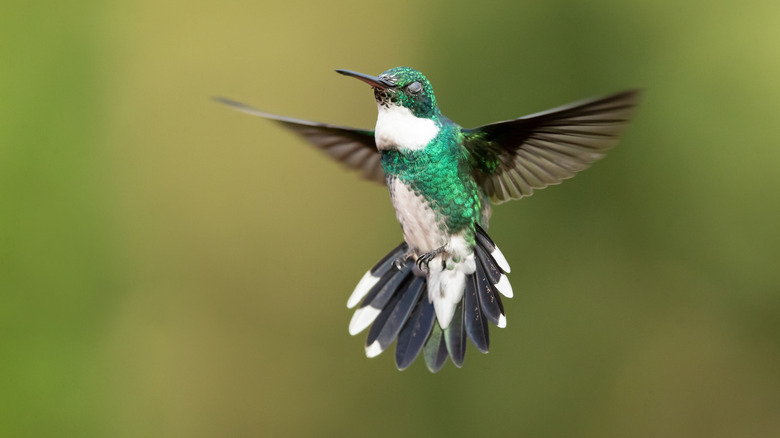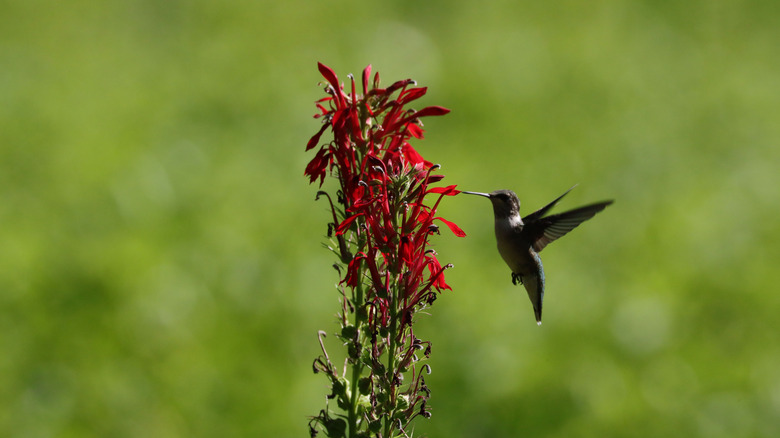These Gorgeous, Bright Flowers Are Perfect For Hummingbirds
From watching butterflies float in the sun to seeing bees zoom from flower-to-flower in the search for pollen and nectar, there is nothing as peaceful as a garden teeming with wildlife. One visitor that is always welcome is the hummingbird. There are several types of backyard hummingbirds you can attract into your garden and by incorporating the right flowers, you can create a hummingbird haven. One such plant that hummingbirds love is the cardinal flower (Lobelia cardinalis). With their bright red blooms and long shape, this native perennial can liven up your yard with color and with wildlife.
If you have ever watched a hummingbird flitter and fly, you know that they are active birds. To keep their energy up, they love drinking nectar from tubular flowers in red, pink, and orange hues. Cardinal flowers have the perfect color and shape to attract hummingbirds, and this is not by chance. Hummingbirds are their primary pollinator, and they have adapted to catch the eye of these little birds. It is the perfect pairing. The hummingbird gets the food they need and the flowers get pollinated. Cardinal flowers will bloom in the summer and fall months and grow to around 4 feet in height.
How to grow cardinal flowers
Cardinal flowers are low-maintenance and easy to grow, so you do not have to be a gardening wizard to plant these into your yard. They are hardy in USDA Zones 3 to 9 and thrive in moist soil. The flowers enjoy full sun or partial shade, but if you live in a hot climate, it is best to plant cardinal flowers where they get protection from the sun during the afternoon. This will help prevent the soil from drying out.
When planting cardinal flowers in your garden, consider their soil needs. If you have a pond, placing them around the water will help maintain a moist environment. You can plant cardinal flowers in borders and containers. If you choose that option, use mulch to help the soil retain its moisture. Plant the flowers 6 to 16 inches apart to allow them to spread out and establish themselves.
Regarding ongoing care, cardinal flowers will usually look after themselves if they are happy in the environment. You may wish to deadhead them to encourage more flowers to bloom, but do not cut them back in the fall. They are also easy to propagate, which you can do through division or by seed.

